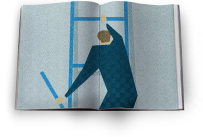Why Clear Job Descriptions and Staff Structures Serve the Church
Let’s start with the big picture…
Every organization—from a Fortune 500 company to government bureaucracy to a non-profit—must define and align themselves according to four essential elements: strategy, operations, finances, and people. These decisions will determine how every organization will faithfully steward its resources and execute its mission.
- Strategy – This answers the identity question. Who are we? Why do we exist? What are our goals, objectives, purpose, vision, and mission? What key principles and core values define who we are (i.e., our “DNA”)? The Bible has much to say about the church’s strategy. The church is the body of Christ and ambassadors for King Jesus. Its strategy is the Great Commandment and the Great Commission.
- Operations – This answers the function question. Considering who we are (identity), what do we do? How do we operate? Again, the Bible answers these questions for the church. The church gathers to preach the Word, sing the Word, read the Word, pray the Word, and see the Word (i.e., practice the Lord’s Supper and baptism). Practically, however, we need to figure how out these biblical values we budget and staff operate the church.
- Finances – Money is just fuel, but we must manage it well to execute our mission. After all, it doesn’t grow on trees!
- People – People are at the heart of every organization, both on the outside and inside. For the church, staff—large or small—oversees and manages the shepherding, serving, and equipping of the congregation for Great Commission work (Eph. 4:11–16).
Of course, the church is different from any other organization on the planet. It’s a blood-bought, supernatural creation that God himself creates (Eph. 2:1–22). But God uses pastors, deacons, and every member to do his work (Eph. 2:10; 4:11–16). And “success” in all this work is faithful stewardship (1 Cor. 4:1–2) of all God has entrusted to us. This is where we move from the big picture to everyday life.
Job descriptions and a clear org chart or staff structure are essential tools for organizational excellence and faithful management. They help keep those four essentials above in alignment through a five-fold purpose:
- Strategy – a good job description and org chart tie each position to the organization’s vision, mission, purpose, and goals (i.e., the identity question). The job description details specifically and practically how each individual job serves the overall mission and goals most effectively and efficiently.
- Operations & Management – a good job description also helps to translate the strategic value of a job into how the organization operates (i.e., answering the function question). Specifically, a good job description enables:
-
- Planning – it prioritizes and schedules specific tasks and responsibilities.
- Human resource administration – it serves as part of a job contract in many ways, detailing compensation, benefits, terms of employment, and work hours/schedule.
- Clear operations – it defines and details expectations and tasks, along with the frequency and amount of time expected to do them.
- Training – a good job description is a key tool for training new staff. It provides all the key elements and details that must be addressed in staff transitions and training plans. It also serves current staff as a practical tool to monitor and manage their professional development, needs, goals, continuing education, etc.
- Evaluation – a good job description sets clear expectations and provides an objective standard to give and receive regular, specific feedback and performance reviews.
- Communication – a good job description helps the whole team understand what you do and how you fit into the organization. Since staff is often our most considerable expense, we need to communicate the tangible benefits and outcomes of staff positions so that our members understand their investment.
So, assuming you’re convinced of its value, what are some critical pieces of a good job description?
Job Title
A good job description should have a clear title.
Job Profile
The job profile details the specific characteristics that best complement the particular tasks and responsibilities for the job. All job descriptions should have a brief description summarizing the ideal profile for the position.
The ideal job description highlights the importance of “the 4 Cs”:
- Character – character is king. Bad character can be a team killer; good character, on the other hand, strengthens everyone around.
- Competence – do they have the skills and competencies necessary to do the job?
- Communication – are they able to communicate well with staff, members, and visitors?
- Compatibility/Culture – do they fit into the culture of your church staff/membership?
Job Qualifications
This could complement or serve as the job profile. It provides specific qualifications and skills that are necessary for the job (e.g., communication, experience, relational, technical, travel, spiritual).
Relationships (i.e., clear staff structures)
The job description should clearly state whom the employee reports to, whom he/she works with, and, if applicable, who reports to him/her. This should parallel the org chart.
Hours
This details the specific daily and weekly hours required for the job (e.g., 40–50 hours/week. Traditionally, Monday–Friday, 8:30-5:30 pm, and other times as needed).
Rationale
This briefly explains the big-picture/purpose behind the specific role, highlighting its strategic relationship and value-add to the church’s mission and ministry. This may complement or be a part of the job profile.
Responsibilities
This breaks out in summary form the major categories/areas of responsibilities of the job.
Departure Notice
This explicitly explains the terms for notice and departure if the employee intends to leave the position.
The Actual, Detailed Job Description – Specific Tasks & Responsibilities
This is by far the largest section of the job description. It takes the major responsibilities and spells out the specific expectations and individual tasks for the job. Depending on the nature of the role, you can use this section to explain the tools and processes to do each task. It’s also generally helpful to include a note for each task that states the expected number of hours it should take.
In conclusion, remember that the job description is simply a tool to build up, encourage, and serve the whole staff and church. Therefore, while the core elements and responsibilities will stay the same in most roles, a good job description is a living document that you should review and revise regularly as the role innovates, grows, and changes.









